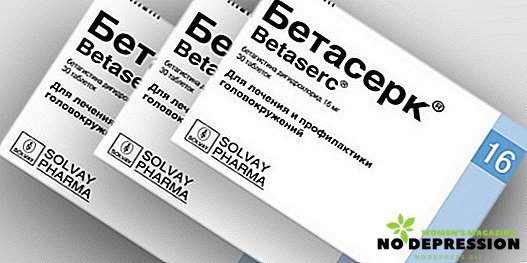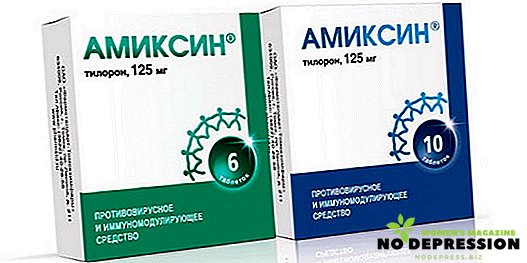The cyst of the corpus luteum is a functional neoplasm in the ovaries. Symptoms of this pathology often do not appear in the early stages. In many cases, the cyst is resolved, but you should not hope only for this - if complications appear, surgical intervention cannot be avoided.

In our material we will tell about the causes of its appearance, symptoms, methods of treatment.
Causes of cysts
The cyst of the corpus luteum, like other follicular neoplasms, is considered a functional growth that forms in the ovary. The walls of benign tumors are formed from the walls of the follicle or corpus luteum. The main reason for the occurrence is a failure in the hormonal system.
Most often, such tumors have a small size, they grow towards the abdominal region, but there is also a more volumetric classification of such formations. A cyst can also develop as a result of:
- rupture of the follicle;
- in the place of accumulation of a large amount of blood or fluid.
 It is also worth remembering that such neoplasms can form only during the two-phase menstrual cycle. According to experts, such cysts in girls (and they are found even in young girls aged 15-16 years) with circulatory disorders in the ovary.
It is also worth remembering that such neoplasms can form only during the two-phase menstrual cycle. According to experts, such cysts in girls (and they are found even in young girls aged 15-16 years) with circulatory disorders in the ovary.
And in some cases, they can resolve literally two menstrual cycles. But during the stimulation of ovulation or in preparation for IVF, the risk of their development increases significantly. Also of danger are benign tumors in those who often take emergency contraception.
Also, a cyst of the corpus luteum may result from:
- Serious physical exertion (and there is no question of giving up sports).
- Strong stress.
- Improper nutrition, for example, with too strict diet.
- Work with toxic substances.
Main symptoms
Such tumors, until they reach a diameter of 7 cm, practically do not declare themselves: they can be detected only when undergoing ultrasound or when examined by a gynecologist. Most often, the main symptoms appear in the presence of comorbidities or inflammation.
The following signs should alert you:
- The feeling of heaviness, pain, pain from the side where the formation appeared (on the left or right side in the inguinal region), and during movement, discomfort may increase.
- Menstruation problems - it can linger.
- Possible temperature rise to +37 degrees.
- Constant desire to urinate (and the larger the cyst, the greater this desire).
- Severe discomfort during intercourse.
But also every woman should know the symptoms that will begin to bother in case of rupture of the tissue of the ovary, cyst, when it is twisted. These include:
 nausea;
nausea;- cutting pains;
- severe bloating;
- high temperature, and it can not be knocked drugs;
- weakness and dizziness;
- sticky sweat;
- pressure surges;
- increased heart rate;
- uterine bleeding.
How is the diagnosis
If you started to suffer from these symptoms, you should not postpone a visit to the gynecologist, since only a doctor can detect a cyst and prescribe the right treatment.
If you suspect the presence of tumors hold the following activities:
- Gynecological examination, during which the doctor must probe the area of the uterus, ovaries. In case of detection of cysts, he will estimate the size and density.
- Ultrasound of the pelvic organs, during which the specialist will determine the density of the contents, which will reveal the nature of the fluid that is inside the cyst.
- Laparoscopy, which is prescribed, if you can not accurately determine the nature of the cyst. When it is performed, a small incision is made in the abdominal wall and special equipment is introduced, which allows for the most accurate examination of the tumor.
Treatment of cysts of the right and left ovary
If the cyst is small and proceeds without pronounced symptoms, surgery is not required. In this case, the woman must be observed regularly at the gynecologist and carry out an ultrasound over the next three months. In most cases, cysts simply dissolve during this period.
But in the case of large neoplasms, conservative or unconventional treatment may be prescribed, in extreme cases - surgery.
Drug treatment
If the neoplasms have not resolved, the symptoms remain, use the following methods of conservative treatment:
- Acceptance of hormonal drugs, such as Duphaston, which will help to normalize the hormones of a woman.
- The use of anti-inflammatory drugs - Ibuprofen. They are aimed at reducing pain, reducing or complete relief of the inflammatory process.

Physiotherapy
These activities are aimed at alleviating the condition of women in the presence of cysts in the right or left ovary:
- Mineral Water Therapy.
- Electrophoresis (i.e., exposure to tissue by electric current).
- Laser therapy or warming.
- Magnetotherapy.
Operative intervention
The operation may be appointed three months after the formations are detected. The main indication - cysts do not decrease in size. The operation is necessary, because in the opposite case, the corpus luteum in the ovaries will start to unevenly reject the endometrium, which can cause bleeding.
And since there is a high risk of ovarian rupture, it is not worth delaying the operation. In addition, over time, it can develop into a malignant tumor. If the operation is performed early, then the ovary will be affected (injured) minimally.
What method to choose, the attending physician has to decide, but there are several nuances:
- It is better to perform a sparing operation with preservation of organs, when you just need to remove the formation.
- If there are no complications, laparoscopy is selected.
Some patients, in order to prevent the appearance of cysts again, remove the ovary. Also, this method is selected in the case when using a laparoscopy can not remove a cyst.

We use traditional medicine
Many women prefer to use recipes of traditional medicine. Undoubtedly, they help, but before applying them it is worthwhile to get the advice of your doctor. In the fight against cyst of the corpus luteum on the ovary can help:
Dandelion
We need to make an infusion: take a teaspoon of dry dandelion, pour a glass of boiling water, cover the container and leave for half an hour. After that, filter the liquid and take 50 ml three times a day. Moreover, the infusion is better to drink 40-60 minutes before breakfast and two hours after dinner. The duration of treatment is 5 days, and it must be repeated before the onset of each menstrual cycle.
Burdock
From cysts helps the juice of this plant. Take a few large leaves, tear, twist in a meat grinder and squeeze the juice. It can be stored in the refrigerator for a maximum of three days, since then it loses all of its healing properties. Take the first two days for 1 tsp. juice twice a day before meals. On days 3 and 4, add another 1 tsp. On the fifth day of the intake, you need to drink three times a day, 1 tbsp.
Herbs
 To prepare a suitable infusion, you need herbs such as:
To prepare a suitable infusion, you need herbs such as:
- red brush;
- boron uterus;
- wintergirl.
And they are brewed separately: pour a glass of boiling water 1 tsp. grass After half an hour after preparation, when the liquid is infused, it must be drained.
Reception of such tinctures begin immediately after the end of menstruation. The first week they drink a glass of broth boron uterus, on the second - an infusion of a brush, and then they prepare the tea from a winter woman and drink a glass a day.
Cyst of the corpus luteum of the ovary during pregnancy
Often, pregnancy is accompanied by the appearance of such cysts. In most cases, there is nothing to worry about - the neoplasms will resolve themselves, without causing harm to her or the child. You just need to visit a gynecologist, who will monitor the development of a cyst - most often it disappears by the 18th week of pregnancy, since it is during this period that the corpus luteum begins to work on the formation of the placenta.
But if its size does not decrease, in order to avoid complications such as hemorrhage and even the loss of a child, laparoscopy is prescribed - this operation is absolutely safe for the baby.
What can be complications
Despite the fact that in most cases, the cyst resolves, it still represents a benign growth, which, if not properly treated, can develop into a malignant one.
The main complications include:
- Rupture of blood vessels and subsequent hemorrhage during intercourse.
- Apolexia of the ovary.
- Infertility.
- Subsequent infection.
- Menstrual problems.
A few prevention tips
In order not to go under the surgeon's knife, you should remember a number of tips that will help you to prevent the development of a yellow body cyst:
- It is necessary to visit a gynecologist at least twice a year.
- Strictly comply with all recommendations of the attending physician.
- Timely treat inflammatory or infectious diseases, hormonal disruptions.
And with the appearance of the slightest symptoms, immediately consult a doctor, thus avoiding serious consequences.


 nausea;
nausea;









